#Prime empire actually being a horror season the entire time
Explore tagged Tumblr posts
Text
hehe so not thinking about how most of those cubed people in Prime empire were children who made the mistake of playing in the arcade the day that the mass virus thing happened.
So not thinking about all the families losing their minds over their missing kids wondering what happened to them.
So not thinking how a lot of the league of Jay could actually just be children dressing as adults searching for someone to protect them, and doing what kids do and making a fanclub out of appreciation and admiration.
So not thinking about Scott needing to adjust to life when he's basically 20ish, maybe, years older than when he entered and when he returns to reality would look the same when he got out so everyone he knew has moved on and accepted him dead while he is physically a guy in his late teens-early twenties who needs a new start. Sure his friends might still be alive but also they might just not have the type of time he still has. He's just an inevitable Alan from the original Jumanji but if he didn't age at all.
Prime Empire why do you have so much actual tragic things happen but they aren't even thought about. like imagine if they showed the mass kidnapping across arcades in a News styled episode, getting witness statements or interviewing victims parents. That could be near thriller level stuff. And what if the disappearance of Scott became its own urban legend? was there ever a legal suite filed against Dyer? how was that at all kept under wraps that well?
honourary mention of the deleted Libber and baby Jay scene that Jay was supposed to see while in the game. you will be missed and pondered for your potential value.
#Prime empire actually being a horror season the entire time#move over possession we have a new season for spooky month#ninjago#ninjago prime empire#scott ninjago prime empire#how tf do you tag scott as a character#jay walker#ninjago jay
35 notes
·
View notes
Text
Sorting Ninjago seasons by Magnus Archives fear entities!
*Vague spoilers for both Ninjago (Masters of Spinjitzu, specifically) and TMA will ensue, there’s descriptions for the fear entities under the cut if you haven’t seen TMA as well as reasoning for my classifications
- Rise of the Snakes: 🪱 Corruption
- Legacy of the Green Ninja: 🔦 Dark
- Rebooted: 🎭 Stranger
- Tournament of Elements: 🕸️ Web
- Possession: 🪦 End
- Skybound: 🌫️ Lonely
- Hands of Time: 🌀 Spiral
- Sons of Garmadon: 🔥 Desolation
- Hunted: 🐺 Hunt
- March of the Oni: ☣️ Extinction
- Secrets of the Forbidden Spinjitzu:🔪 Slaughter
- Prime Empire: 👁️ Eye
- Master of the Mountain: ⚰️ Buried
- Seabound: ☁️ Vast
- Crystallized: 🦷 Flesh
Explanations for entities and classifications below
The tl:dr is that the entities are manifestations of different common fears/phobias:
🎭 Stranger (uncanniness, not knowing, dolls)
🕸️ Web (arachnophobia, being manipulated, controlled)
👁️ Eye (eyes, being watched, exposed, judged, knowing too much)
☁️ Vast (large open spaces, falling, the ocean, giant creatures, space)
⚰️ Buried (claustrophobia, suffocating, drowning, being trapped)
🐺 Hunt (predators, being hunted, chased, prey)
🦷 Flesh (body horror, being consumed, dysmorphia, blood, cannibalism)
🔦 Dark (darkness, what lies in the dark)
🌫️ Lonely (loneliness, abandonment)
🪱 Corruption (bugs, infestation, rot, toxic relationships, trypophobia)
🔪 Slaughter (unpredictable or meaningless violence, war, weapons)
🌀 Spiral (insanity, madness, gaslighting)
🪦 End (death)
☣️ Extinction (cataclysmic disaster, world ending threats, mass extinction)
🔥 Desolation (burning, loss, pain, destruction)
Reasoning:
- Rise of the Snakes: 🪱 the catalyst of all of the “plague” to enter Ninjago (aka the overlord), opening a can of worms, Lloyd forms toxic dependencies on people (Pythor) out of necessity
- Legacy of the Green Ninja: 🔦 the Overlord’s whole intent is to spread darkness
- Rebooted: 🎭 lots of human-shaped but not actually human antagonists
- Tournament of Elements: 🕸️ the entire thing was a ploy, Skylor was manipulating them the whole time, no one trusts each other
- Possession: 🪦 …ghosts
- Skybound: 🌫️ team gets separated and Jay and Nya have to go on alone
- Hands of Time: 🌀 time travel fuckery in general idk man I can’t really remember this season. gonna be honest, this one was my throwaway
- Sons of Garmadon: 🔥 the Royal Palace is destroyed and the main antagonist’s primary motivator hinges on loss and destruction
- Hunted: 🐺 do I really need to explain this one
- March of the Oni: ☣️ pretty much all of the seasons have a world-ending threat but idk this one felt especially… world-ending-y?
- Secrets of the Forbidden Spinjitzu: 🔪 senseless violence pretty much summarizes both arcs
- Prime Empire: 👁️ technology, being watched, y’know…
- Master of the Mountain: ⚰️ they are. literally buried. in a mountain.
- Seabound: ☁️ vastness of the ocean etc. etc.
- Crystallized: 🦷 body horrorest season. kinda corruption also but s1 is definitely not flesh so it is what it is-
#yes I only did this because I realized Ninjago had the perfect number of seasons for each of them to get a fear#can you blame me#and I do take criticism#so if there happens to be any other fans of both TMA and Ninjago out there feel free to add your voices lol#ninjago#lego ninjago#tma#the magnus archives#auto speaks
20 notes
·
View notes
Text
Yes yes everyone wants the glorious angst that comes with this AU, but I want to focus on the sheer comedic potential this has.
Because Possession is S5. Seabound is S14/15 (depending if you count the Island and MotO as their own seasons). That's potentially 10 ENTIRE SEASONS that Kai (and Morro) has been keeping this secret.
Do you know how many hoops they'd have to jump through in that time???
Kai and Morro trying to unbind from each other during Skybound with a wish only to accidentally swap their positions (Morro's body with Kai possessing him) and have this whole accidental bonding moment from the experience.
Morro knowing so much background dirt on the Time Twins because he's a bit older and Kai using this to make the most cutting insults that leave the twins flabbergasted because is it just me or did Ray & Maya's son just reference this super sensitive insecurity? It has to be coincidence. There's no way he'd know that.
Kai/Morro and Harumi staring at each other in SoG because Morro can detect the evil vibes from a mile away. Harumi feels spooked because instead of just one super angry older brother of Lloyd constantly glaring at her before she even does anything as the Quiet One, now there's two (Green Cousins go brrrr). Morro tries to interfere with the summoning ceremony via sacrificing himself as a ghost and Kai grabs him by the ankle like "no >:(" -- Morro does manage to grab Sensei G though so now there's just... two Garmadons running around.
I mean, come on, Baby Wu and Morro in Hunted. The comedy writes itself. Morro's freaking out because WHY AM I OLDER THAN MY NOT-DAD and Baby Wu keeps gravitating toward "Kai" (much to Cole's dismay) because he somehow knows in the way kids do
Kai nearly gets caught by the oni smoke and Morro uses wind to blast it away, in which they both realize Morro's powers are SUPER useful in this attack but they can't reveal Morro. Cue the most elaborate contraption made of stolen air conditioner fans and duck tape that doesn't actually work because it's just a cover-up for Morro. Jay is so proud. Nya and Pixal are completely befuddled and can't figure it out.
Aspheera either stealing wind instead of fire and being very confused while Kai scrambles for a lied explanation or she steals Kai's fire and Morro just smacks her with a hurricane instead while the others aren't looking.
Morro transforms into one of those little video game buddies in Prime Empire. On one hand, he's ecstatic that he has a body again, but on the other... he's stuck pretending to be an NPC buddy (bonus if he's just like... a small cat or something) that Kai "bought" in the shop.
Their cover nearly gets blown in MotM because Morro sees Griefbringer and just starts cooing like when you see an adorable puppy. The entire team watches in confusion and horror as "Kai" somehow tames this massive evil skeleton dragon and asks if he can keep them. Morro also calls out the Skull Sorcerer on copyright infringement on the evil-villain-colour-scheme.
And then all the comedic potential in between from Morro's wind powers being how Kai gels his hair up (he just blasts wind in his face before using hair spray) to Morro sneaking out to a Hot Topic and the internet exploding with pictures of the "Fire Ninja" in the store to Kai messing with bad guys by using wind to fan the flames of his attacks
Just... the amount of shenanigans these two go through trying to keep up the charade and this secret for ten whole seasons (and they would've gotten away with it too if it wasn't for that meddling Wojira)
morro ends up bound to kai after possession. in an attempt to not be possessed 24/7, kai gives morro a chance, but they end up getting closer than expected. armed with a powerful best friend, kai neglects to mention this in fear of getting yelled at by his brothers, and morro sits idly by. years later, he's forced to reveal morro during seabound. discuss.
187 notes
·
View notes
Text
Voltron: Legendary Defender—an Unfulfilling Copy of Award-Winning Mecha Predecessor and Market Competitor, Transformers Prime?
Note, this comparison post has major spoilers for both Transformers Prime and Voltron: Legendary Defender. It contains screenshots/topics from the shows that some may find sensitive or disturbing.
The Transformers franchise and Voltron franchise have been direct market competitors, in toy sales and in (primarily boy-targeted) cartoons, since 1984. Both franchises have various iterations and reboots spanning decades. But in June 2011, Voltron: Force aired and stumbled. It was cancelled after a single season and achieved zero awards. In comparison, the competing Transformers franchise had aired Transformers Prime in November 2010, and the cartoon gained immediate critical acclaim, winning over older fans of highly successful previous Transformers cartoons—and pushing the content limits of the (US-rated) Y7-FV mecha genre.
By the time Transformers Prime (TFP) ended in 2013, it had earned several awards and set high standards for mecha cartoon shows in regards to animation, directing, plot complexities, and moral ambiguity, with a very extensive budget per episode.
This 2010-2013 show ultimately wasn’t your average kids show. Executive Producers Robert Orci and Alex Kurtzman admitted to using this show as their way to deepen the characters they fell in love with from writing the PG-13 live-action film, Revenge of the Fallen.
But did the show tone down its PG-13 origins? Not by much, if at all. TFP deals with very dark, edgy content, as well as sophisticated introspection into various characters. And it got away with it, in part, because it handled controversial topics so well.
Transformers Prime, under a TV-Y7-FV rating, boasts:
Multiple instances of major character death (even within episode 1, complete with blood splatters)
Graphic body horror and mutilation
Zombies
Physical and mental/emotional abuse
Electrocution, near-death experiences with major health consequences, betrayals, and torture
Amputation, disabilities, and characters actively experiencing PTSD and having mental breakdowns
Horror-genre monster chase scenes
Major trolley problems and moral ambiguity
War crimes
Good guys doing questionable/bad things, bad guys doing good things, and good guys working with mass murderers to defeat a common enemy
To an extent, transformers themselves do not exhibit a fully human image, which decreases the possible emotional reaction one might have to the graphic content. At the same time, this show dropped its money hard on developing the characters and making them as “human” as possible, and even having the human characters struggle with that realization, which resulted in a suspenseful, emotionally invested viewing.
The show still, to this day, enjoys an involved and productive fandom who delight in its characterizations, its plot, and its core message (which executive producer Jeff Kline explained as “the universal need to find or forge a family and a home”).
But why does Transformers Prime matter to today’s children mecha show environment? And why does it specifically matter to the audience who watched Voltron: Legendary Defender?
Executive Producers for VLD, JDS and LM, were still working on Legend of Korra, which ended in 2014, when they pitched a reboot for Voltron only months after TFP had finished in late 2013.
Hilariously, a lot of what happens in VLD had already happened in Transformers Prime, but with the twist of following through on a positive or morally meaningful message. So if you’re looking for a show that does what VLD did, but did it well—check out Transformers Prime. This show accomplishes:
Powerful female-gendered characters who live to enjoy their heroism and achieve their dreams
Individuals overcoming their PTSD and reintegrating socially
Humans not being the center of the universe and actually learning moral lessons
Multidimensional, dynamic villains, antagonists, and self-aware heroes
Abuse victims and villains breaking the cycle of evil
Deceased warriors being consistently remembered for their sacrifice and value
Socially and physically nonconforming individuals rising to great moral fame and recognition
A powerful character dying for the greater good, in which they transform into something even more powerful
Heroes being held to high moral standards
Still not sure about checking out TFP? Then enjoy this list of the vast extent to which VLD mimics TFP, as well as how TFP handles such topics with increased complexity and finesse compared to VLD:
Updates to Worldbuilding and Backstories
TFP, in keeping with live-action films, boasts aged-up human companions compared to previous transformer cartoons (Sari from TFA was only 9 at the start of the show). Transformers has, time and again, more typically aligned itself with bildungsroman (coming of age) storylines. Not surprisingly, VLD followed suit in adjusting its pilots to more strongly align to the teenager age group. For the Voltron franchise, however, this meant de-aging the pilots, which made them more fallible in a franchise where they were traditionally the center point of morality as adults. This is unlike the young humans in TFP, who are traditionally schooled by or in dialogue with the transformers about moral decisions and the hardships of growing up/becoming more responsible.
TFP’s synthetic energon or Synth-En, drives people crazy similar to VLD’s quintessence overexposure, bringing out the worst in them. Dark energon, which glows purple and is a mystical science-magic, is derived from a source of great chaos and lends disturbing powers, including reanimation of the dead and mind control, to one willing to bond with it. This is similar to quintessence manipulation as well.
The war between Decepticons and Autobots ultimately resulted in the destruction of their planet. Similarly, for the first time ever in Voltron history, both Daibazaal and Altea are destroyed in the war, leaving both people groups (or their remaining warriors) homeless and roaming the galaxy in guerilla warfare.
TFP boasts characters who live through incredible spans of time. VLD, for the first time in Voltron history, expands with a world of basically immortal aliens as well.
Updates to Characters
VLD also majorly expanded or revised previous Voltron lore, characters, and character arcs. In doing so, it brought Voltron characters closer than ever to their Transformer counterparts in TFP:
(A quick list of characters discussed, for reference if you need it)
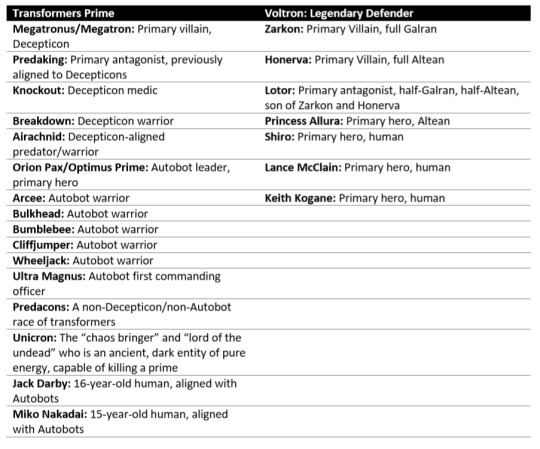
Honerva copies Megatron, both before and after his corruption. Honerva’s new history was entirely unprecedented within Voltron lore, but it was a core staple within TFP.
Both Honerva and Megatronus start off as good people, with very close friendships with the protagonist leaders, Alfor and Orion Pax. Both Megatronus and Honerva see societal ills, inequality, and want to fix them, challenging the traditions/hoarding of power by those of higher authority. Both Megatronus and Honerva are told their ideas for improving the world are wrong because they involve force and a demand for access to great power (For Honerva, it’s the quintessence field. For Megatronus, it’s the powerful Matrix of Leadership, which would result in making him a prime). Both characters ignore the concerns of Alfor/The High Council and grow increasingly more frustrated with the balance of power, desiring to usurp it for themselves. Both suffer the consequences and jumpstart a millennia-long war.
Their names change upon corruption. Megatronus becomes Megatron. Honerva becomes Haggar. Neither Megatronus nor Honerva are ever again able to truly separate from who they’ve become. The good part of them is permanently marred.
They’re both obsessed with a magic that can be used for great evil, from a questionable, destructive source (Dark Entity/rift creatures in VLD, the chaotic dark entity Unicron in TFP).
Both shows include an episode of the protagonists/heroes diving into the mind of Honerva/Megatron for more information, and having a harrowing experience in doing so.
Both Honerva and Megatron reanimate, to an extent, a dead soldier (Lotor/Cliffjumper) and use his body/weapons for their own purpose.
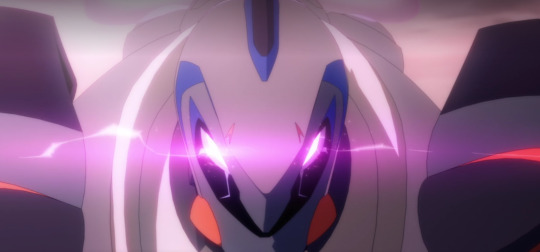
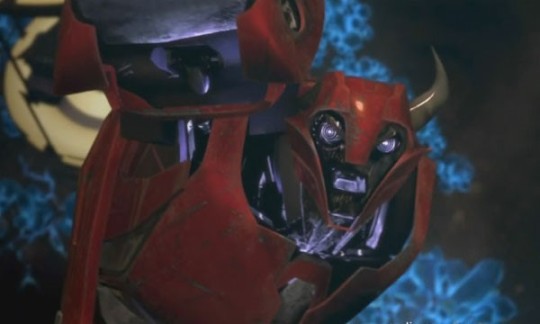
Honerva and Predacons Rising Megatron
In the final movie that ended TFP, Predacons Rising, Megatron’s character gets taken to a whole new level. Honerva’s arc eerily matches:
Both Honerva and Megatron are overwhelmed when the Dark Entities/Rift Creatures and Unicorn decide to destroy the world(s) most precious to them.
Both die and are reanimated back to life by dark power.
Upon reanimation, both can wield purple magic.
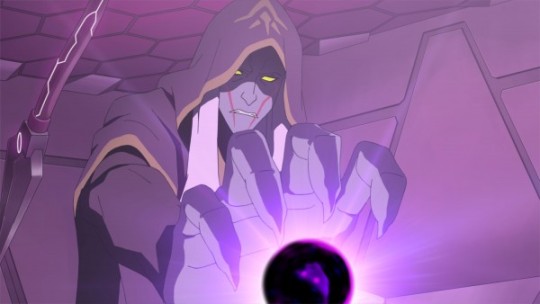
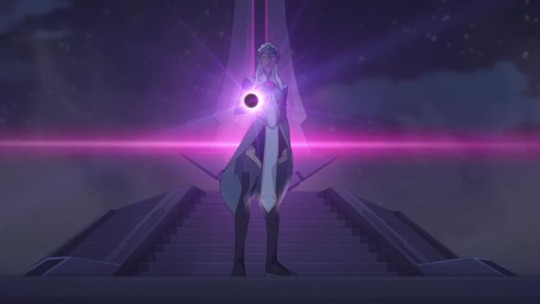
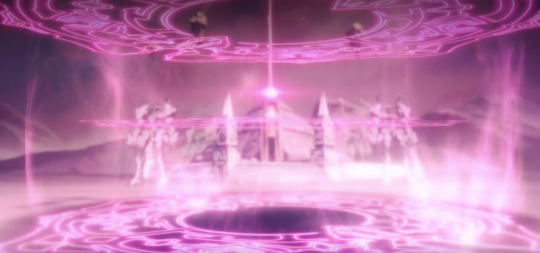
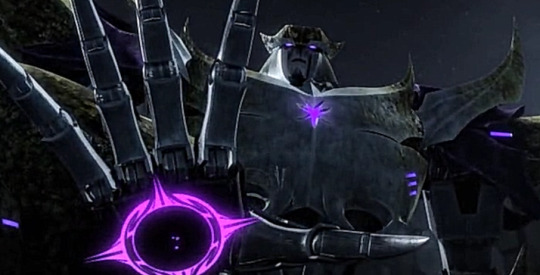
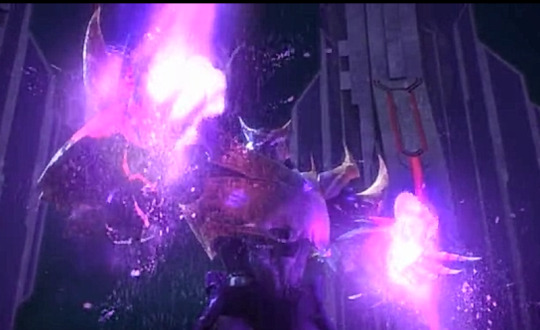
In TFP, Unicron, an ancient dark entity who is the source of all chaos and evil, says, “Your husk will simply be an instrument of my will.” Megatron undergoes a painful transformation that alters his usual form. In VLD, through contact with a dark entity and through the corruption from pure quintessence exposure, Honerva becomes Haggar. She is heavily altered visually, and is little more than a puppet of Zarkon’s will until she remembers who she is and fights back to regain herself, just as Megatronus does with Unicron.
They both gain the ability to peer into the minds and even alter the minds and behaviors of others.
Megatron cannot join the Allspark (go to the afterlife) because he’d been joined to the lifeblood of the chaotic Unicron, and he spends a deal of time cursed inside the mind of Unicron. Honerva’s soul does not move to the afterlife in death, but instead, being infused with quintessence, she is reanimated. They’re both the immortally undead. In addition, Honerva had “cursed” the souls of the OG paladins. They were inside her mind with her, unable to be in the afterlife because of it, similar to the plight Megatron finds himself in within Unicron’s mind.
They both give themselves over to scorched-earth policy. Honerva refuses the title to run an empire and goes on to nearly destroy the multiverse. Megatron, as Unicron’s puppet, admits to fellow Decepticons (who are subsequently disturbed by him), “I do not wish to conquer this world—I wish to eradicate it.” Honerva follows suit in her desire to achieve the past at any cost to the future of an entire multiverse, carrying Megatron’s banner that, “The past shall consume the future!”
A quasi-redemption arc: Both Megatron and Honerva achieve what they want. Megatron gets bonded to the spark of a great, chaotic power, able to warp time and space as a new, all-powerful being. His abilities allow him to quickly fly to a regenerated version of his home world, Cybertron, which had been destroyed millennia ago. Honerva gets access to Oriande, transreality materials, and achieves entry to a dimension with a still-living family on her home world of Altea (which was living, unlike the Altea she know, which had been destroyed millennia ago).
Once they’re given over to the power or end they desired, they do not achieve the true effect they wanted. They have a moment where they lose their own personal agency within that situation, only to rage to destroy everything at great risk to themselves, and then from out of the rage, fall into a daze of distaste for what their desires have brought them.
Then they both act defeated, whiny, and salty over how nothing’s like what they wanted.
They both disappear off into the sunset in a disquieted, defeated sense of, “Whatever, I guess I’ll be good now and do my own thing because I’m tired.” (Paraphrasing here.)
In TFP, the insanity of Predacons Rising Megatron is described by Predaking (another character) as, “Dark magic…perpetrated by the demon who lives in Megatron’s skin.” In a similar manner, Lotor accuses the Oriande-infused Honerva of being “an abomination.”
Zarkon is a mirror to the standard, more well-known Megatron. But in VLD, he boasts similar characteristics, like Honerva, to Megatronus, picking up Megatronus’s gladiator history. Class issues are important to both Zarkon and Megatronus as well.
It’s implied that Megatron was born into a very low class and rose to power through the gladiatorial ring by rite of combat, bolstering his political career. As a gladiator “in the pits of Kaon,” his rise to become the leader of the Decepticons mirrors Voltron’s brand-new lore of Zarkon rising to imperial power through the Kral Zera, which is a ceremonial gladiatorial arena to establish the new leader through rite of combat.
Zarkon functioned as a military mentor for Alfor; Megatronus was a political mentor to Orion Pax.
According to the lore of the original Thirteen Primes, Megatronus Prime got into a fight with his brethren that resulted in the death of his lover, Solus Prime, a weapons forger. Megatronus Prime’s title as “The Fallen” being closely related to in-fighting specifically over a lover in many ways echoes in the ultimate breakdown of friendship between Alfor and Zarkon, specifically over Honerva and her abilities to manipulate quintessence into tactical advantages/weapons. The end result is that Zarkon “falls” as well through Honerva’s death, just as Megatronus Prime falls through the death of Solus Prime.
Zarkon is massively injured and in a state of unconscious for a time, disrupting the empire. Megatron as well is massively injured in a state of unconsciousness for a time, disrupting the order of command for the Decepticons. In both instances, this is a major plot device to introduce other characters to the show and deepen political conflict.
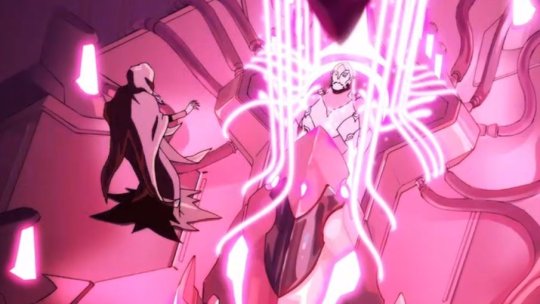
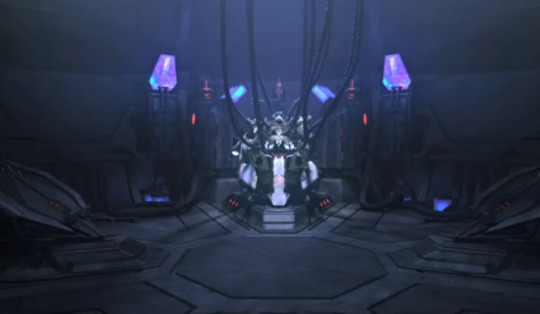
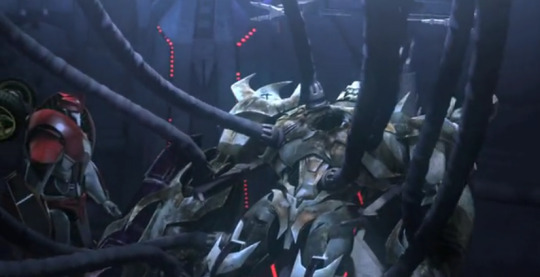
Zarkon’s armor and facial reconstruction for the reboot more closely mimic Megatron’s elongated face and eye-set, as well as his very wide-shoulder, spiky armor, complete with angled armor lining his cheeks. It’s similar enough that others have poked fun at their similarities.
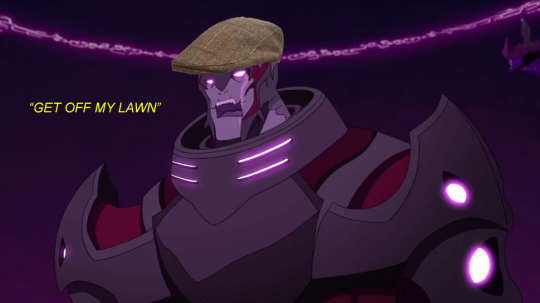
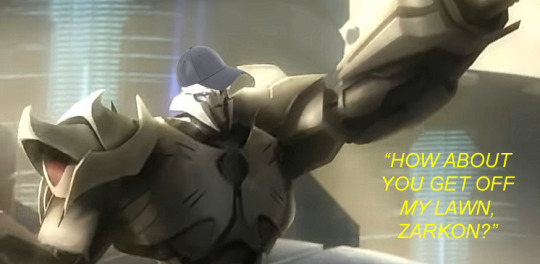
Alfor’s history more closely mimics that of Orion Pax. They’re both initially great friends with the very person who would later seek to kill them and their friends.
It’s implied that Megatronus suffered through the very issues that he was critiquing to the High Council. Meanwhile, Orion Pax was of a higher class and coddled from experiencing the same societal ills. In many ways, this echoes how Alfor critiqued the behaviors of Zarkon and Honerva, while standing from a place of incredible power through Oriande, as well as physical peace and comfort.
Alfor and Orion Pax are both very scholarly individuals without the military expertise as touted by their counterparts, Zarkon and Megatronus.
Alfor and Orion Pax are both initially deceived by the heartfelt words of their friends, only to realize in horror what their friends actually desired beneath it.
Orion Pax and Alfor stand as the ultimate inheritors of the powers and status coveted by Zarkon/Honerva and Megatronus.
When Orion Pax is converted to Optimus Prime, his old self somewhat dies, and he becomes a more perfected, all-powerful version. Alfor, likewise, dies in the war…and his legacy is inherited by Allura, who is canonically shown as even more powerful. She carries on the mantle/legacy as previously set before her by her predecessors.
And last but not least of the Big Four, Princess Allura’s arc in VLD very closely mimics Optimus Prime’s arc in TFP.
Like Optimus Prime, Allura becomes locked into a millennia-old war that she did not start herself.
Optimus Prime is the last of the primes. Princess Allura is the last of the royal Altean line. Both primes and royal Alteans have access to deep knowledge and mystical abilities coveted greatly by others of their race.
The High Council bestows the Matrix of Leadership, which is the core of Optimus Prime’s power. The Ancient Alteans of Oriande impart their wisdom and knowledge to enhance Allura’s power. Megatronus’s failure to achieve the Matrix, receiving only rejection in return, is echoed in Lotor’s rejection and fall in Oriande, who like his father sought to obtain such power through Galra-standard force.
Optimus Prime is a member of an endangered species, believing his few Autobot comrades to be some of the only ones remaining after the great war. In a similar way, Princess Allura struggles with the isolation and fall of Alteans. Both Optimus and Allura are separated by vast distances of space from other possible survivors of their own kind.
They both agree to truces with great enemies and unknown powers for a specific end. Allura accepts the dark entity and works alongside Lotor. Optimus makes several deals with Megatron, at great hesitance from his team.
Both wield great power that no one else currently can.
They both sacrifice their lives and own energy in the end to restore life itself to worlds, because they cannot separate themselves from the power it takes to restore life.
They both pass down a “transformation” to one of their brethren before dying. Princess Allura gives Altean marks to Lance. Optimus converts Bumblebee to a warrior.
Their comrades all stand and watch as they willingly sacrifice themselves, and they have first-row seats to a major visual outpouring of light and life.
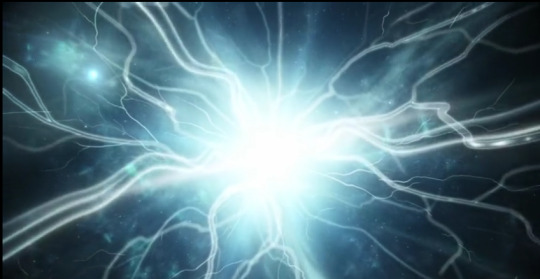
(Screenshot explanation: The visual effect of Princess Allura sacrificing herself to restore life to the multiverse.)
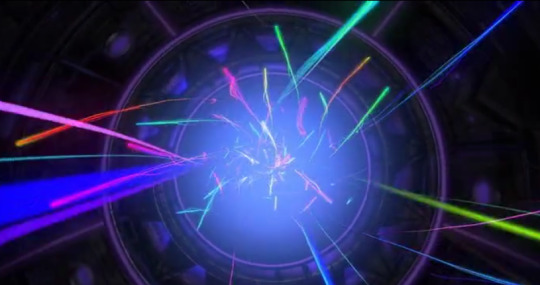
(Screenshot explanation: The visual effect of Optimus Prime sacrificing himself to restore life to the Well of All Sparks.)
Aside from The Big Four, there are other TFP characters with extreme similarities to VLD supporting characters.
Knockout/Breakdown/Predaking as Lotor
The Knockout connection to Lotor
According to Hasbro’s vice president of development and scripted entertainment, Mike Vogel, Knockout as a character received several upgrades because his previous iteration as “Lugnut” wasn’t considered sexy enough. Similarly, Lotor in VLD was upgraded to be a prettier bad boy in several ways that he hadn’t been before, especially in regard to physical clothing and behavior. Both pretty bad boys ultimately boasted a tight waist, spiky shoulders, great eyeliner, and heavily angled paneling on their torsos:
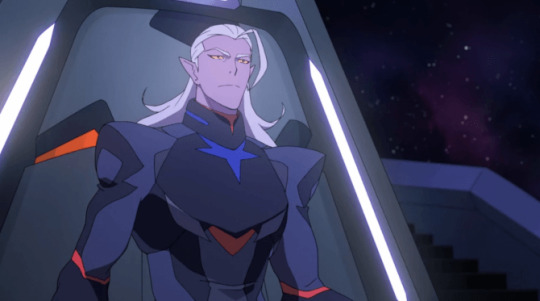
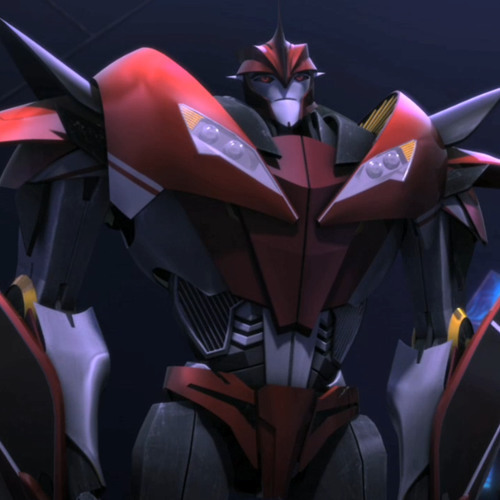
Knockout is coded as being “different” than most of the other Decepticons and is looked down upon for having a road-based alt-mode instead of an alt-mode that affords flight. In being so, he is more similar to the Autobots despite being born as a Decepticon. Likewise, VLD heavily increases the amount of attention and derision given to Lotor for being half-Galran and half-Altean. Both Knockout and Lotor profess great confidence and satisfaction in what they are, though, regardless of anyone else’s critique.
Knockout is summoned to Earth after the fall of Megatron, who remains in an ill, unconscious state. This is reflected in how Lotor is introduced into the revised Voltron series, to assist his reigning father in a time of need.
Knockout is a medic and is tasked with preserving life—or taking it out. Lotor’s base motivation is also to preserve life, but he maintains Knockout’s underhanded side of also deciding when to eliminate a loose or unproductive end.
Unlike previous iterations of Lotor, the VLD Lotor is excessively more evasive and less likely to barge in bull-headedly into battle. Knockout uses similar tactics.
Knockout gets melded into a ship (although unlike Lotor, he does get out and isn’t dead).

Knockout constantly schemes for more power and prestige, using underhanded tactics. He has very little loyalty but does have a deep bond with fellow Decepticon Breakdown, who functions as the muscle to Knockout’s intelligence. They’re usually seen together as two halves of the same brotherly unit. In a similar way, Lotor is the scheming commander and point of intelligence in his own small group. His generals are overall the brawn, like Breakdown.
Knockout provides confidential information about his old Decepticon comrades to help the Autobots while in custody as a prisoner of war. (Although unlike Lotor, Knockout demands, “We’re prisoners of war; we have rights!”)

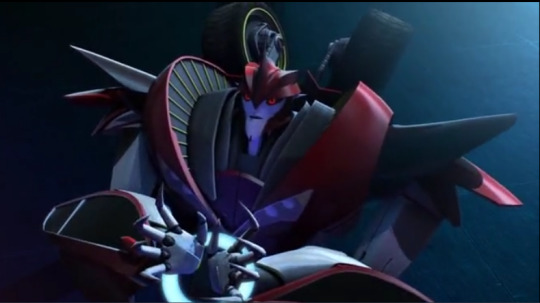
The Predaking connection to Lotor
Predaking is a type of Predacon, an ancient beast that died long ago but is brought back to life through experimentation. In ways, his ancient status and the strange circumstances of his “birth” echo in the way Prince Lotor is a vestige himself from ancient times and was still growing in Honerva when she died, suggesting that he died as well or was somehow preserved by his infusion with quintessence. The result is that his life is unnaturally sustained by quintessence itself, when he would have otherwise been dead. Similarly, Predaking’s existence was not possible without intentionally overriding natural limitations, since his kind could not be “sparked” naturally.
Predaking is groomed to be a weapon for Megatron and initially assumed to be a dumb beast. In doing so, he endures ongoing physical and mental abuse by the Decepticons, particularly Megatron’s second in command, Starscream. As he grows more intelligent and powerful, he increasingly balks against the treatment he receives and loses loyalty to Megatron. This is similar to Lotor being groomed as the heir to the Galran throne via brainwashing but yet suffers abuse for what he is. He, like Predaking, ultimately grows to reject much of what he’s been told to believe about himself and his place in the world. Both Lotor and Predaking are strong enough to challenge and nearly defeat the main heroes of the shows, Voltron and Optimus Prime, respectively.
Predaking, in hatred for Megatron who tried to make him a weapon, attacks him with the intent to kill. Lotor, likewise, attacks his father, Zarkon—although Lotor does achieve killing him.
Both Predaking and Lotor are core to the dismantling of various alliances upon the discovery of a colony of innocents being killed in the name of tactical war advantages. In both cases, the innocents were people in tubes being groomed/harvested for war purposes.
The Breakdown connection to Lotor
Decepticon Breakdown is betrayed by one of his own team members, whom he had found attractive and had flirted with. The Decepticon femme Airachnid kills him. The distorted remains of his body end up being used for spare parts for a terrorist’s horrifying fusion of organic flesh and mech technology. Ultimately, Breakdown’s body is a victim of being used post-mortem to further the military aims of another person who wanted to exploit him. Breakdown’s personal agency is completely removed, and his body receives no rest.
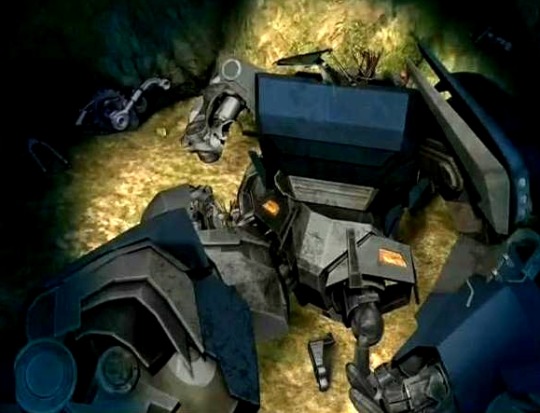
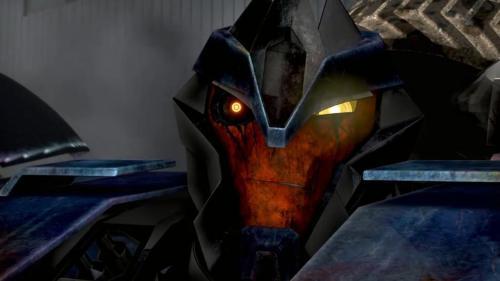

Lotor, likewise, is betrayed by Voltron and specifically by Princess Allura during an alliance. Princess Allura, as his love interest, kills him. The distorted remains of his body, which are fused to the Sincline ship, end up being used post-mortem to further the military aims of Honerva. Lotor’s personal agency is completely removed, and his body receives no rest.
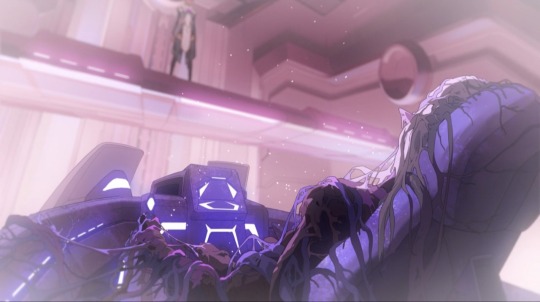
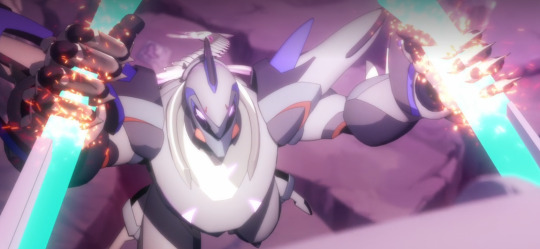

Bumblebee as Lance
Bumblebee and Lance, as the beloved young but inexperienced warriors, are both killed and brought back to life.
Bumblebee has progressively taken over as the frontrunner of the show within the Transformers franchise. Likewise, Lance gained more screen time and heightened significance in VLD compared to previous Voltron iterations.
Lance in the VLD finale and Bumblebee in the TFP sequel both struggle with the dissonance between who they were during war and now who they are as guardians or people look up to, but who are somewhat vestiges of the past.
Optimus Prime, prior to his death, changes Bumblebee from a scout to a warrior, which was not what Bumblebee was originally designed to be. Princess Allura, prior to her death, alters Lance from being purely human to exhibiting Altean characteristics.
Arcee as Shiro
They both suffer from PTSD, having been tortured by the enemy, interrogated, and experimented on. Arcee, being mechanical, has had her visible scars repaired, but the nightmares remain. Shiro similarly experiences PTSD.
They both have lost a significant other to war. They’re both afraid of losing the children they’re responsible for.
They both find family and are able to find happiness by the end, putting to rest any conflict they had over their previous partner.
Nemesis Prime (a Clone of Optimus Prime) as Kuron (a Clone of Shiro)
Nemesis Prime is a “clone” of Optimus Prime, developed by the human terrorist group M.E.C.H. He exhibits a physical appearance similar to Optimus Prime but, when activated, carries out their will of death and destruction.
Similarly, Kuron is a clone of Shiro developed by Haggar. He exhibits a physical appearance similar to the true Shiro, but when activated, carries out Haggar’s will of death and destruction.
The reputation of Optimus and Shiro are temporarily called in question before others realize what’s actually happening.
Jack Darby as Keith Kogane
Both have missing/dead fathers. Their mothers are alive, and they’re very close to their mothers, but said mother is often not a part of their daily life, given her own missions.
Both are loners and go through an arc of no longer wanting to be a part of the team, during which the team has to remind them of what they’ve gained and how important they are.
Both have a high sensibility to wanting to do the right thing, but not feeling worthy or wanting to have a position of power.
Both are constantly annoyed by the bull-headed antics of their teammate (Miko/Lance), often rolling eyes or getting on their case, but end up bonding with them in the end.
Both are the “human” lead for their team.
Both inherit great power. Optimus Prime, when no longer able to complete the mission, hands Jack the Omega Lock key. When Shiro is no longer able to be Black Paladin, Voltron chooses Keith to carry it forward.
And there’s so many other character similarities.
Moral Ambiguities
VLD also copies the moral ambiguity standards set within Transformers Prime.
In an Afterbuzz interview at the 12:52 mark, JDS and LM uplifted VLD as fairly groundbreaking for children’s shows, per its moral ambiguities. JDS said, “The finale is almost, I don’t know—I don’t wanna say unlike anything that you would see in other like-minded shows, like let’s say, like, Transformers or Power Rangers, or….something that Voltron was like, by outward appearances, being compared to. But it was something I think really exciting for us to explore because we did create villains and create heroes that worked within this very kind of, like, shades of gray spectrum. There was black, there was white. But we played in this weird morally ambiguous zone a lot of the time. And that was—I think, it was important for audiences of every age group to see that.”
Lauren Montgomery agreed at 13:33, stating, “We also came from working on shows like Avatar the last Airbender, and Korra, which very much pushed those boundaries as well, and were extremely ground-breaking for children’s programming. And it was not something that was coming out of western animation.”
Afterbuzz Interview: https://www.youtube.com/watch?v=MudCcj6QRzA
However, the vast majority of what VLD did plot-wise with moral ambiguity was already used inside TFP, a western animation cartoon airing well before Korra:
The Colony Problem
In TFP, Autobots Wheeljack and Ultra Magnus knowingly and willingly commit massacre against innocent beings. Predacons (a different race of transformers, based on ancient beasts) were being groomed in test tubes in Megatron’s facility for the purpose of becoming Decepticon warriors. In fear that Predacons would hurt humans, the Autobots choose to kill them all. This decision comes back to haunt them dearly, through Predaking’s discovery of the massacre.
Predaking, who is a Predacon himself, is an antagonist of incredible moral ambiguity. He expresses great frustration with both the Autobots and the Decepticons. He despises the abuse he endures from the Decepticons, despises Megatron for betraying his kind to the Autobots, and then despises the Autobots, who knowingly commit massacre against his own kind. His tactics and perspectives, as he refuses both sides of the war and fights to create his own space, result in him becoming an ultimate antagonist to both Autobots and Decepticons.
The Trolley problem as experienced by the Autobots (sacrificing some to save many), and the resulting political fallouts, are mirrored within VLD.
In VLD, Prince Lotor had faced a similar trolley problem as well, in which he was instrumental in how several innocent Alteans were sacrificed for an unknown military aim against the Galra. The slain Predacons and second-colony Alteans are both shown in tubes in an experimental lab, represented as victims/cannon fodder of a much larger military function.
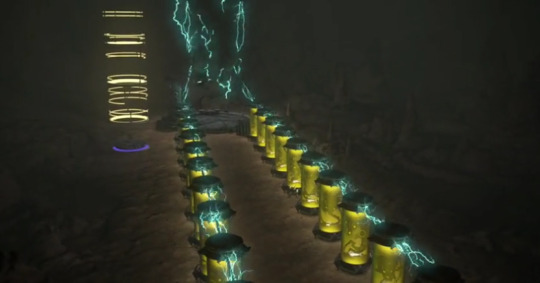
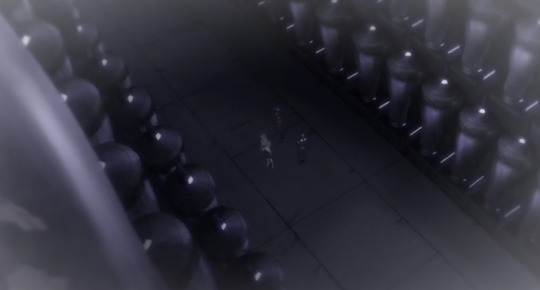
In VLD, the discovery of the Altean colony results in an utter destruction of previous alliances. Similarly, Predaking breaks ties with everyone in total disillusionment and rage, never again believing Autobots when they say they believe in peaceful coexistence of two races. His sentiments are echoed into VLD, in which the Galra are suspicious of Voltron and call them traitors.
Moral Shades of Gray: Characters Who Fall on a Spectrum
TFP’s Predaking has his own code of honor and is a primary example of a morally ambiguous character. He absolutely despises the Unicron-reborn version of Megatron. He snarls, “Dark magic…perpetrated by the demon who lives in Megatron’s skin.” This implies that Predaking ranks himself higher in his ways than Megatron. But Predaking, in his desire for revenge and power, also falls short of the stated moral standards of the Autobots. Similarly, Lotor absolutely despises the witch Haggar/Honerva, calling her an “abomination,” and yet he fails to meet the moral standards of Voltron and is therefore named an enemy despite their alliance.
Moral Focal Points: Have the Good Guys Always Been Good? And Have the Bad Guys Always Been Bad?
In TFP, the Autobots are said to have been the moral standard. However, they also bear a dark history of class issues / inequality and political corruption.
Similarly, in VLD, Alteans posit themselves as the moral and diplomatic standard, desiring peace for all. However, the Ancient Alteans hoarded Oriande’s power for only a select few of their kind. Alfor had no problems barreling in and using force against other people groups, in s3 flashbacks. He also created the most powerful weapon in the universe to enforce his version of peace, in which Voltron itself feeds off the life force of its paladins. Alteans additionally were able to terraform entire planets, the technology of which would have required immense power (where did they harvest that from?), and the result was the massacre of all life on said planet, for them to use to their will. These canon details suggest the Galra’s “komar” life-harvesting technology may have originated from Alteans themselves.
In VLD, the Galra (through Commander Lahn) express frustrations with Princess Allura’s coddled mindset, which mimics Megatron’s own frustrations with Autobot morality, which is derived from a position of power and comfort.
So, in general, there’s a moral similarity between TFP and VLD, in which the “heroes” have these dark pasts and yet attempt to smooth it over, while the “villains” are victims of a much larger, oppressive order and are calling the heroes out for their hypocrisies and crimes, demanding access to the same power as they wield, or committing similar crimes as the heroes and suffering harder for it.
So given all these similarities, how in the world is TFP so much better than VLD, message-wise?
1. TFP actually understood moral ambiguity.
In TFP, Megatron disbands the Decepticons, tired of bloodshed, without turning to the Autobots or acknowledging their perspective as the morally correct one.
The humans in TFP are excessively fallible, just like their transformer counterparts. There is a human terrorist group, M.E.C.H, who paces both Autobots and Decepticons, desiring their technology to enforce their will upon the world. These humans commit great horrors against both sides of the war, resulting in difficult decisions, odd truces between the Autobots and Decepticons, and humans fighting other humans. In other words, humans are NOT the moral center of the universe.
Some Autobots have looser morals and less self-control than others, which grates against the sensibilities of the more morally sensitive and results in a lot of disagreement and problems.
TFP consistently reflects on lessons learned. The heroes admit when they are wrong or fail to achieve moral perfection in their actions. They have to struggle through those decisions, the consequences of those decisions, and are bolstered to do better, be better.
The villains are not simply obsessed with power and are also capable of having empathy and doing things outside of pointless destruction. Breakdown is pleasantly surprised when one of the humans asks, “How are you?” And Breakdown responds politely. He also expresses sympathy for the hard work and struggle of the vehicons, who are servant-class workers on the Decepticon ship, similar to Galran robots. Likewise, Knockout expresses a love of human zombie movies and going to drive-ins to watch them, along with appreciating human vehicle design and street racing.
TFP shows villains scared and in pain, with a tremendous range of emotion and dreams. This is way more complex than how the villainous Galra are shown in VLD, who are consistently on a war path.
The heroes are willing to side with the villains (who killed their own people) to defeat common foes. The tension and resulting conversations from those truces are hilariously more complex than VLD, in which Voltron refused to work with Emperor Lotor, who is implicated in killing Alteans in the larger war against Galra. Instead of pursuing the tactical advantage of an ongoing alliance, Voltron simply assassinates him without due process for his war crime, asserting Voltron as the only morally unfallible point in the universe.
TFP shows the human heroes learning when they’re fallible and trying to be better.
TFP actively struggles with how human children/teenagers are endangered by the war, even when the children themselves don’t understand the danger.
2. TFP does a lot of other things well.
TFP always maintains a perspective that the true battle between good and evil is not a physical one—but one fought within the heart. Per Optimus Prime, “As even Megatron has demonstrated on this day, every sentient being possesses the capacity for change.” This is vastly unlike VLD, which stumbles to handle the perspectives of Voltron antagonists or the belief that people can truly change.
Megatron endures the very suffering he’d inflicted on others and comes to the decision on his own to stop his violence and disband the Decepticons, also ending his own “stereotypical toxic masculinity” arc. This contrasts heavily with Honerva, who goes into the afterlife without an understanding of why she can’t be happy as she is, demanding happiness and a family after she’s caused so much pain even to that family, perpetuating her own “stereotypical toxic femininity” arc.
There is a significant difference in the sacrifice of Optimus Prime compared to the death of Princess Allura. Optimus Prime’s sacrifice was a major power move, as well as not unexpected, given Transformers’ history of killing him off. (Although back in his first death in 1986, this was a horrifying shock to children who looked up to Optimus as a father). But within the context of TFP, Optimus had undergone a low point in the story prior, only to be rebuilt stronger than ever and growing in power and confidence as the re-energized leader of the Autobots. He had everything to live for (family, friends, regenerated planet, power) when he chose to sacrifice himself for others. Additionally, he knew there was hope in choosing to sacrifice his material body to restart the Well of Sparks, so that life could be regenerated on his planet. Optimus Prime even contextualizes his death in terms of rebirth and hope. His last words to his friends are: “Above all, do not lament my absence, for in my spark, I know that this is not the end. But merely, a new beginning. Simply put…another transformation.” He flies into death, more powerful and revered than he had ever been. He has a peaceful expression on his face. All of these details are wildly different from VLD. Princess Allura, like Optimus Prime, hits a low point beginning in s6 when Voltron’s alliance with Emperor Lotor unravels. But unlike Optimus Prime, Princess Allura continues to be progressively stripped of identity, power, and personal agency, careening into utter despondency until she willingly kills herself, with nothing to live for. She constantly gives up her own personal power to others, increasingly isolates herself from others, grows more emotionally volatile, denies her own people, and sinks into the background as other characters determine her life and decisions. There is nothing personally identifying about her by the end, with even her crown and state of dress removed/replaced with the uniform of a basic human soldier. Sorrow for her value and death comes too late in the story, when she has already become the most expendable character. It’s of additional significance that no one in VLD tries to help Princess Allura by offering other ways to resurrect the multiverse. There are only some paltry sniffles and weak, “No, don’t” responses. This is a huge contrast to TFP, in which several characters immediately are incensed by the thought of losing Optimus Prime. They jump in with ideas for how to possibly save their beloved leader, willing to endure more personal hardship on his behalf. They express that they didn’t fight this hard to resurrect Cybertron, only to lose someone they cared about. Optimus Prime explains why their ideas would not work, but in doing so, reveals that he is already one with the All Spark (meaning, that his spark is already part of a mystical collection of souls with the capacity to be born/reborn, and that continuing to live, bonded to the All Spark, would be denying all other souls from experiencing life). It is his explanation that bolsters the necessity of his sacrifice and converts his final words from being a hollow comfort to a genuine conviction that this was not the end. That they would all someday meet again.
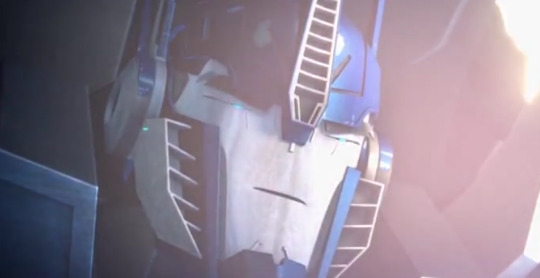
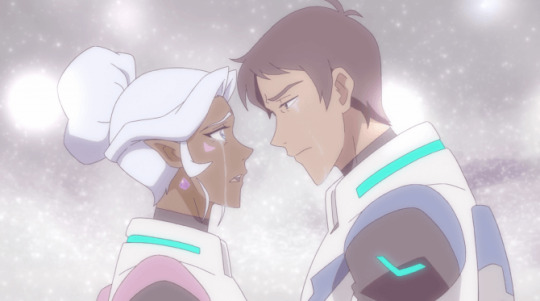
In the TFP sequel, Robots in Disguise (2015), it’s revealed that Optimus Prime, in death, has become an interdimensional being, capable of still interacting with and providing guidance to Bumblebee on the “human plane,” all while being spiritually tested by greater beings with even more interdimensional power than him (the Primes). Interestingly enough, this topic is mirrored within VLD. Such interdimensional beings are confirmed to exist via season 7, in which the Voltron paladins are whisked away by an all-powerful interdimensional entity, who tests their worthiness as warriors. Additionally, some of the VLD meta by @leakinghate posits that an afterlife existence for Princess Allura and Lotor as interdimensional beings was supposed to happen in the VLD finale, but was ultimately not published. Had such been published, Princess Allura’s final arc would have further matched Optimus Prime and better maintained the hope and meaning associated with his arc.

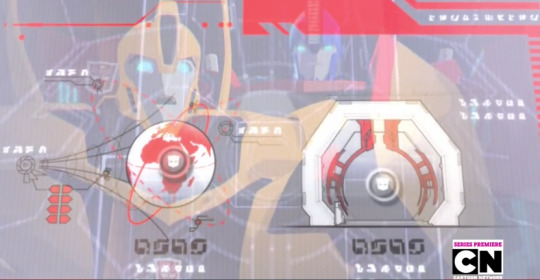
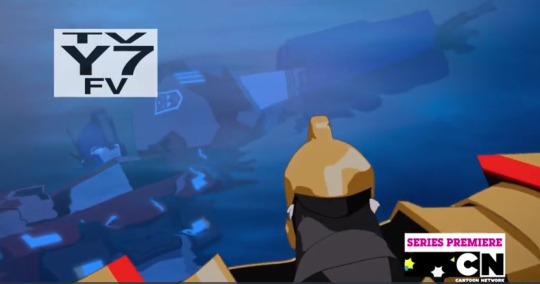
Transformers don’t always save the day. Sometimes, it’s a little human girl with a baseball bat, or a little human boy with coding skills, or a teenager willing to put themselves in harm’s way to protect them. This greatly humbles the Autobots, some of whom struggle with their pride and the reality that they don’t have all the answers all the time, and that sometimes, they need to be protected too.
TFP actively struggles with both positive and negative prejudices assigned to humans and transformers. The humans originally think the transformers are just robots without souls—they think it’s all a game. They soon discover that transformers can bleed, and have emotions, and have a soul than can die. Likewise, some transformers find the humans to be a nuisance and despise their “fleshiness,” but soon overcome those perspectives to grow very protective and attached to humans. In other words, everyone struggles through their own perspective and learns on the way.
Optimus Prime remains the consistent point of morality for TFP. When he does controversial things, like engaging in an alliance with Megatron or allowing medical aid to be provided to Decepticons, he acknowledges those things and explains his reasoning. This is unlike Voltron, who engages in action without reflection while still demanding a position as the unquestionable moral center of the universe.
Knockout, as the Lotor bad boy of the series, defects and actively becomes a member of the Autobots. He admits he didn’t have the best role models, and it’s shown throughout the show that he endures physical and mental abuse by some Decepticons as well. He makes a cameo in Robots in Disguise (2015), suggesting he is still alive and well as an Autobot. Optimus Prime at the end of TFP includes Knockout when he says each of his teammates had acted as a prime, offering a tremendous weight of value and respect to Knockout.
Even Predaking, the antagonist, ends up helping the Autobots when it counts and otherwise remains distant with them.
Predaking gets justice against his abusers.
Autobots and many Decepticons are consistently horrified and disturbed by the crimes perpetuated against Decepticon Breakdown, whose body is taken and mutilated by terrorist group M.E.C.H.
Arcee manages to positively cope with her PTSD and remains as an active, plot-intrinsic character to the end, with several episodes dedicated to her own character arcs and the advantages she provides the overall team. She lives to see and experience her dream of a restored planet come true, without being turned into an example of the sexy lamp trope.
The transformers are able to achieve their goal of restoring Cybertron and generating new life, which allows several other characters to begin healing from the trauma of war and regain what they had lost.
The humans who make villainous decisions have dire consequences.
The human Miko rises up to become an Autobot Wrecker in her own right, without sacrificing or compromising anything about who she is, how she presents herself, or what her other interests are.
Bulkhead originally despises Decepticons but ends up rescuing his own sworn enemy from torture and dismantlement because he learns to put justice for and the safety of all people first.
The number of parallels between Transformers Prime and Voltron: Legendary Defender extend even beyond this list. And yet as seen above, TFP succeeded in so many of the major areas where VLD ultimately failed.
Transformers Prime, even years after its finale, remains as the award-winning show that transformed dark and edgy content into messages of hope, redemption, gender equality and social acceptance, moral responsibility, the power of teamwork—and did it as a Y7-FV show geared primarily for young boys.
So, if you were disappointed in VLD and how it ended, check out the edgy but satisfying TFP for what a real children’s mecha show should be like.
(Special thanks to @mermaider00 for being my TFP buddy and for suggesting some of the points discussed in this post!)
#Voltron#vld#Voltron Legendary Defender#Transformers#Transformers Prime#tfp#s8 critical#meta#AN ADVERTISEMENT FOR TRANSFORMERS PRIME#Y'all need to watch this show#TFP was the VLD I had wanted all along and already had#I watched tfp when it first ran#then I had deja vu when I went back to rewatch after watching VLD#it's not a perfect show#still has flaws#the show even garnered a convention panel in 2015 about various production and show bible and budget issues#but it stands the test of time#i love transformers prime so much
51 notes
·
View notes